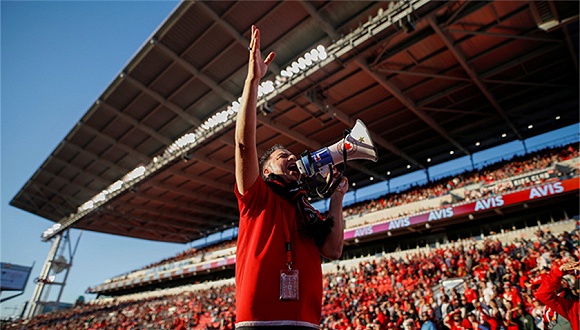August 11, 2017 is the deadline for FIFA to apply for the 2026 World Cup. As a result, in addition to the United States, Canada and Mexico earlier announced the joint bid of the three countries, FIFA received only the first minute of the registration deadline to receive the application submitted by Morocco. Such a downturn in the bid enthusiasm and the two World Cup in 2018 and 2022 formed a sharp contrast, and the huge gap with the three countries to bid for the North American power, also doomed the fate of Morocco again "accompany run".
At the evening of June 13, 2018 Beijing time, at the sixty-eighth session of the FIFA congress, the United States, Canada and Mexico defeated Morocco without any suspense, becoming the host of the 2026 World Cup, thus opening the world cup for the first time in the Three Kingdoms.
With the expansion of the world cup to 48 teams, there will be 80 games at that time. Then the question has come. How will the three North American countries coordinate their division of labor to ensure the normal operation of the world cup?
How do the three hosts divide their work?
According to the bid plan, the organizing committee will choose 16 of the 23 election cities in the three countries of North America, with Mexico and Canada hosting 10 games in 3 stadiums, and the United States will undertake the remaining 60 games through 10 stadiums. In the 10 matches held in Mexico and Canada, there are 7 group games, 2 32 strong games and 1 16 strong games.
From the 1/4 final stage, every game in the future will be held in the United States, and the final is expected to be performed at the metropolitan stadium in New Jersey, USA. In addition, on the day of the opening of the world cup, three host events will be held.
One of the advantages of the North American three countries' joint bid is that every alternative city has built and operated stadiums, each with an average capacity of more than 68 thousand spectators and can ensure continued use after the world cup. By contrast, Morocco's bid plan includes 9 new stadiums, and FIFA is clearly unwilling to take risks.
How is the schedule of the 48 teams arranged?
The 48 teams in the world cup will be divided into 16 teams according to the expansion of the tournament. After a round round tournament, the top two of the group will go to the top 32, which means that the 16 teams will return to their home after two games. There is a challenge to point out that the team composed of three teams is likely to be extremely uneven. Who will be promoted and who will be eliminated after the group draw, may have lost the suspense.
It has also been pointed out that in the three teams, the first round team will suffer a lot. Because these 16 teams will face the team that has already played in advance, if the opponent wins the first game, they will only have to get a draw in this game to ensure the promotion, and if the opponent loses in the first game, then he will do its best in this game to ensure that it will not be eliminated.
People who support the expansion of the world cup believe that the race is guaranteed to increase 16 teams while adding only 16 games to the original - meaning that it will not increase the number of days. At the same time, the two finals will also be the same as at present, after six matches to finally stand on the final stage.
Preselection or intercontinental cycling
As we all know, the world cup expansion policy has been the core policy of the FIFA president Hussein Van Tino to reform FIFA. This policy has been able to expand the number of every continent to the final circle of the promotion, including ensuring that one team in Oceania will be in the world cup. New quotas are added as follows: Asia has increased from 4.5 to 8, Africa from 5 to 9, from 3.5 to 6 (including three host), from 4.5 to 6 in South America, from 13 to 16 in Europe, and from 0.5 to 1 in Oceania.
There were 46 seats directly on the list, of which the host occupied one or more seats and occupied the continent. The remaining two seats will be decided by the additional match. The preliminary proposal of the additional competition is: a total of six teams play additional matches, except for Europe, each continent sends one team, the host is located on the continent, and the six teams are ranked the top two teams for the FIFA, the remaining four non seed teams first decide the two teams, and then the two sub teams decide the final two quota.
 News Center
News Center Cotact Us
Cotact Us

